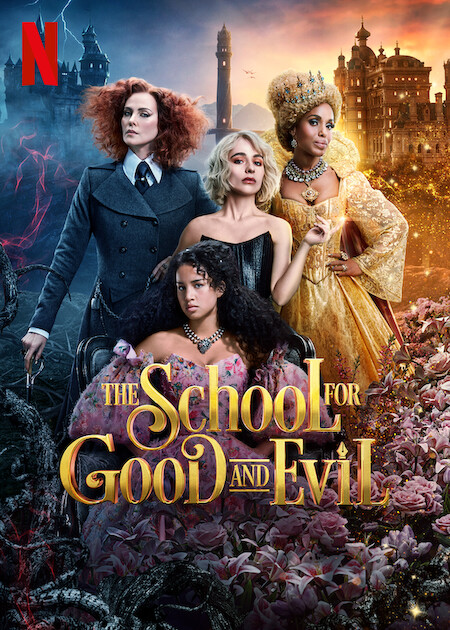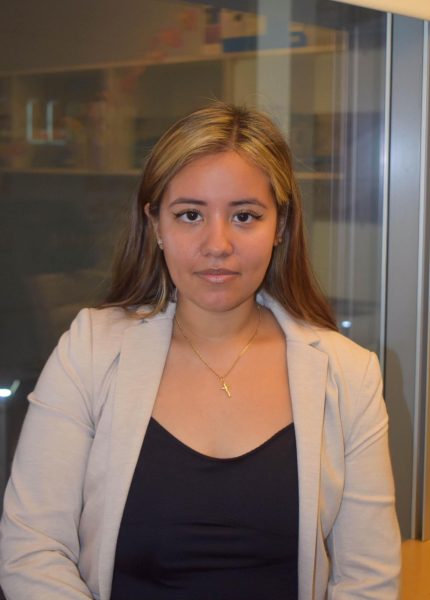Review: ‘School for Good and Evil’ adaptation doesn’t live up to the original
November 6, 2022
We’ve witnessed cliches in storytelling and in popular culture as we grew up. Netflix’s latest adaptation, “The School for Good and Evil” presents this at a school.
Directed by Paul Feig, the movie is an adaptation of its book counterpart, originally published by Soman Chainani in 2013. It is described as, “This year, best friends Sophie and Agatha are about to discover where all the lost children go: the fabled School for Good & Evil, where ordinary boys and girls are trained to be fairy tale heroes and villains.”
Sophie is played by Sophie Anne Caruso who is known for her Broadway role of Lydia Deetz in “Beetlejuice.” The character is supposed to be a version of a fairy tale princess with luscious blonde hair, and fairy tale gowns adorned with flowers and glitter.
She’s overlooked in a home where she has a stepmother and annoying step-siblings, similar to a classic Cinderella tale. The major difference being there’s a twist as the story progresses.
Agatha is played by Sofia Wylie, most known for her many Disney roles. Agatha is supposed to embody the essence of an evil witch, dark clothing, potion making and an overall gothic personality.
Although completely different, the two are supposed to be twin sisters. However, in the movie they aren’t depicted as such — with completely different families.
As in many cases, the book contains much more story development and characterization than the movie. Even to the extent where it seems like the movie may be a completely different story.
In the book, Agatha and Sophie are equally developed from the beginning until the end. They each go through their journeys and progressions of their characters.
In both the film adaptation and the book, Sophie wishes to be taken to the School for Good and Evil to escape the world of Gavaldon and live the fairy tale life she believes she deserves. When her wish is granted, Agatha tries to stop her only to be dragged along with her.
When they get to the school, the girls are switched into what they believe are the wrong schools. Agatha is placed with the Evers, fairy tale heroes and princesses while Sophie is placed with the Nevers, fairy tale villains and witches.
Although the adaptation starts off focusing on these two characters and their joint journey into the School for Good and Evil, it feels like the focus is centered on Sophie.
Agatha is cast aside as a character whose only purpose is to further Sophies’ character development in the movie, which feels wrong and incomplete. While Sophies’ transformation into a villain makes for an interesting plot, the scale of balance seems skewed towards her storyline.
“The school for good and evil could’ve been a slay if it wasn’t for the random anti-semitism, pedophilia and the way they wrote agatha but they really dropped the ball lmao, ” a user tweeted in reaction to the movie.
In the film, Agatha is taken away from her central plot points, like her ability to hear and grant wishes, her metamorphosis into a roach, the plotline of her revelation that Tedros, the son of King Arthur and male protagonist, is her true love and her own journey to self-love.
Although the differences between movie and book may seem subtle, it gravely challenges the sequence of events and perception of characters.
To viewers, it feels like Agatha’s life revolves around trying to save Sophie, even casting aside Tedros when he confesses his love for her. It takes Agatha away from her progression as a character, which many viewers would’ve preferred.
The film tries to make up for its lack of substance with its excessive use of CGI, dance battles and Sophies’ transformation into a witch that brings giggles instead of fear.
The screen time given to our “protagonist” could have been shared between the two, to make the film more similar to the original.
Thankfully the film didn’t take the essence of Chainanis’ tale away, still getting viewers to question if there is such a thing as truly good or truly evil.
Additionally, it makes viewers think if there really is such a thing as fate. Sophie believed her fate was to be a princess, acting like one even in Gavaldon where no one was privy.
Her exterior made viewers believe she actually was, only for her wickedness to transform itself into her appearance and actions towards the end.
The film executed this well if we disregard its lack of characterization and introduction to different plotlines. Viewers and readers can only hope the sequel stays truer to Chainanis’ written piece.








